Did you know that there are over 140 species of butterflies in Oregon and surrounding states?
Finding a Guide to the Most Common Butterflies in Oregon or surrounding states was not as easy as I thought. Some guides were too broad and others didn’t provide enough information about their diverse characteristics.
That’s why I created a list of the 10 MOST Common Butterflies in Oregon.
This ultimate guide will not only give you the most common butterflies in Oregon or surrounding states but also important and interesting facts about them.
10 Common Butterflies in Oregon
#1. Painted Lady (Vanessa Cardui)
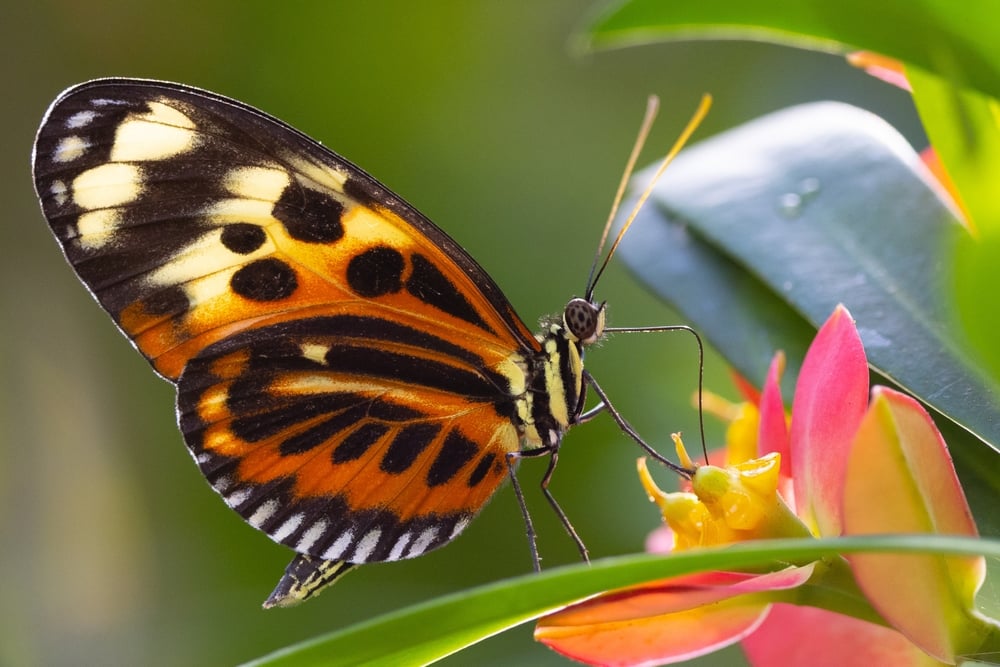
The painted lady butterfly can be spotted in Oregon in gardens, forests, fields, and around perennial plants as they are most common in those habitats.
You can easily identify these kinds of butterflies since they are so bright and are very common during the summer through autumn. This is because they feed on nectar from the flowers that bloom during those times of years.
Related: 50 USEFUL Plants to Attract Pollinators
They are also beneficial to the ecosystem as they are some of the greatest pollinators in summer. They also look stunningly beautiful during their migration.
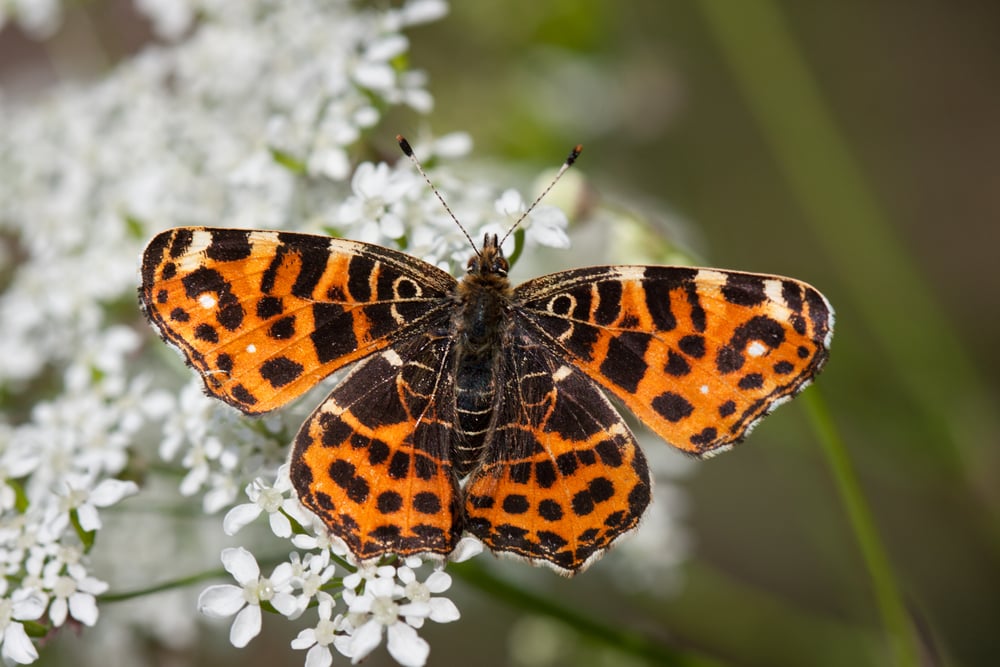
Identifying Characteristics and Facts
- The painted lady butterfly has a pale orange color dominant on the upper wings.
- The tip of the forewings is marked with black and white spots.
- The underside of their wings has brown, black, and gray color shadings.
- They have long and thin antennae and a distinct club at the end of their slender and thin bodies.
- They are long-distant migrants and can travel for over 12,000 km.
#2. Red Admiral (Vanessa Atlanta)
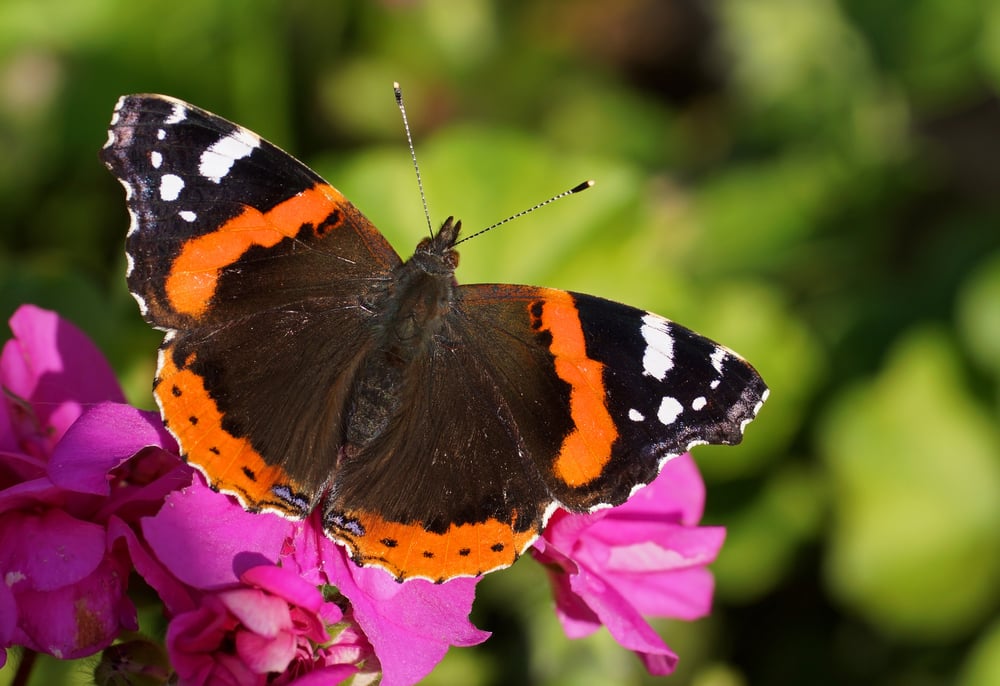
Whenever you are in Oregon from anywhere between March through October, you will definitely see this type of butterfly in the gardens and fields. They feed on nectar and can be identified by their inconsistent flying pattern.
When backing on the sun, you will see their wings open all the time. One interesting fact about them is that they can fly at high altitudes, so you’ll always want to be looking up in the sky for them.
Just like most butterflies, this one also feeds on nectar from most plants that bloom during their season – that is spring through autumn.
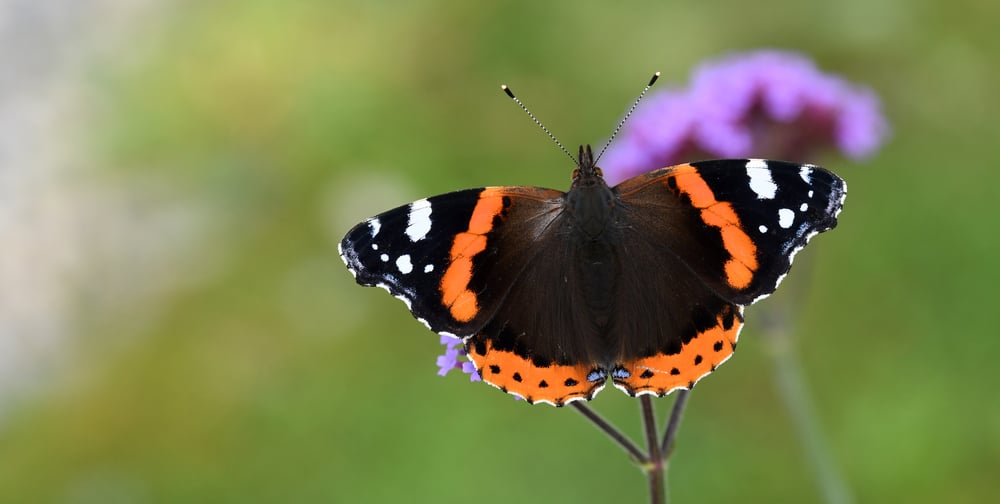
Identifying Characteristics and Facts
- Have wings of about 2 – 3 inches in length.
- Has dominant black color with red or orange rings clearly visible on both wings.
- Has white spots toward the edges of their wings.
- They are medium-sized with long antennae.
#3. Viceroy (Limenitis Archippus)
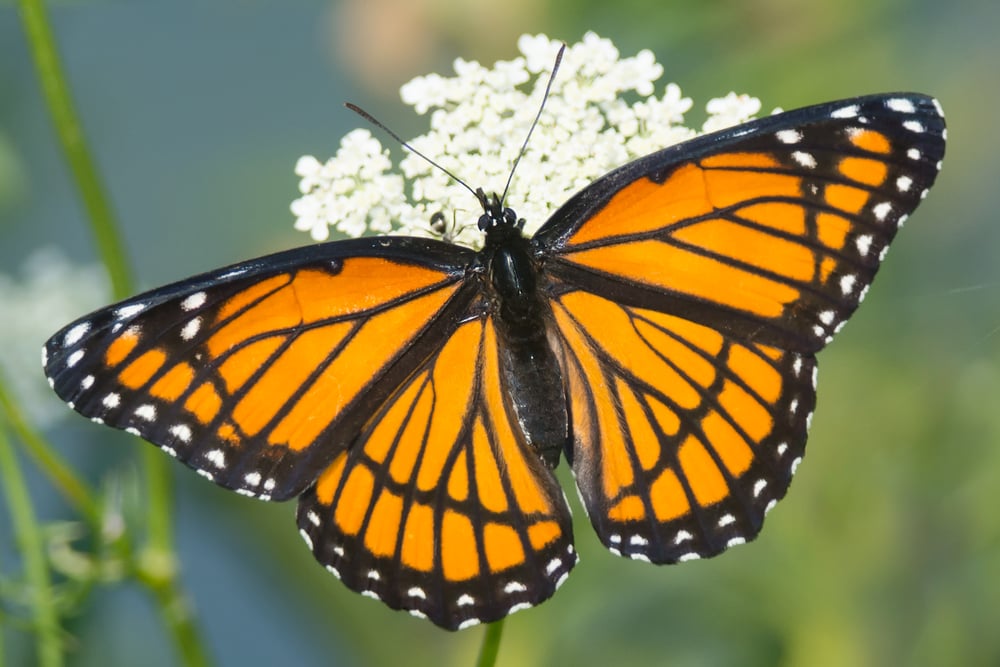
This is an interesting butterfly that has some varying characteristics compared to most other butterflies. One being they feed on fungus and dung as well as nectar.
Viceroy is one of the butterflies that do not migrate and when they do, they only fly for short distances. This is because of how they fly compared to other butterflies – they don’t float but instead keep flapping their wings while gliding.
Because this butterfly can’t float, it will only fly for short periods of time. You are likely to see them mostly in wetland areas such as along rivers and streams.
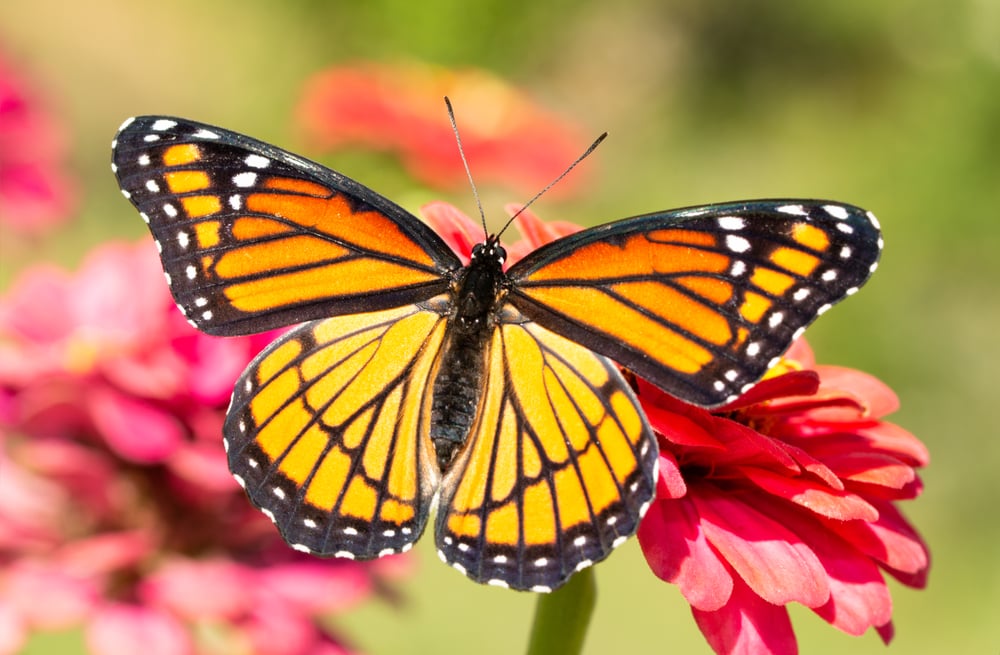
Identifying Characteristics and Facts
- Has a wing span length of 6.3 to 8.6 cm.
- Dark orange with black stripes and white spots on the edges of their wings.
- The caterpillar is black with white spots.
- Feeds on nectar, dung, and fungus.
- Does not migrate.
- Has a stable population and can have up to three generations in a season.
#4. Spring Azure (Celastrina Ladon)
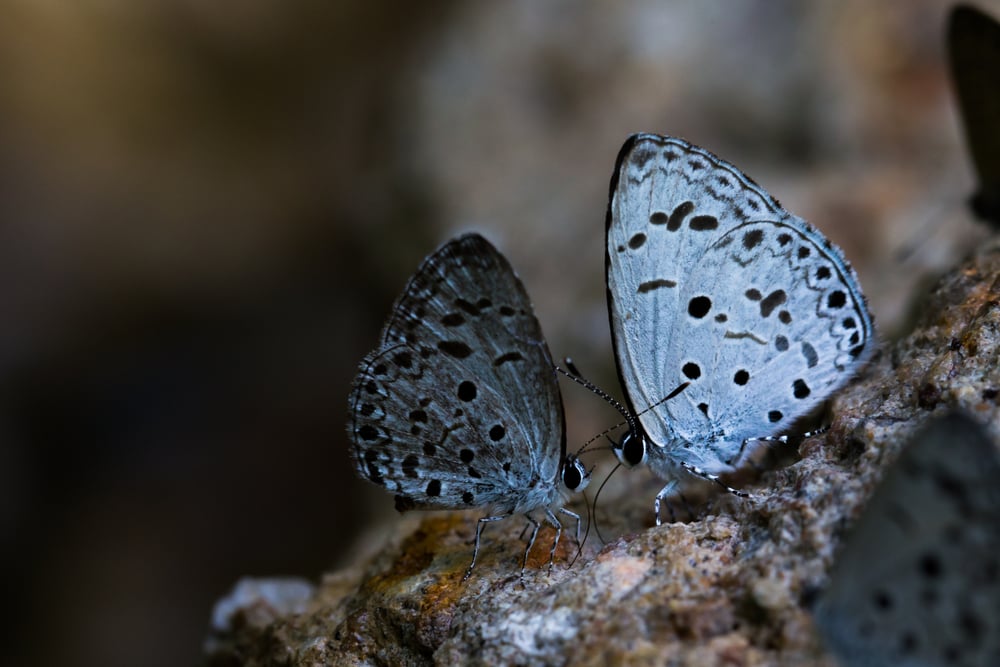
You can easily find these butterflies anywhere in Oregon, the Midwest, or in the East Coast (this butterfly is being including in the southwest and west zones just from an education standpoint). Whether it is in the fields, forests, gardens, or bushy areas, you can’t miss the Blue Azure Butterfly.
One thing you will note about these butterflies is that they emerge earlier than most, just after the wintering period. Even before the buds of most trees open, you will start to see the Blue Azure.
It would also be important to note that spring azure caterpillar butterflies host on the flowering dogwood plant. Other trees it can host on include the Blackberry and New Jersey tea trees.
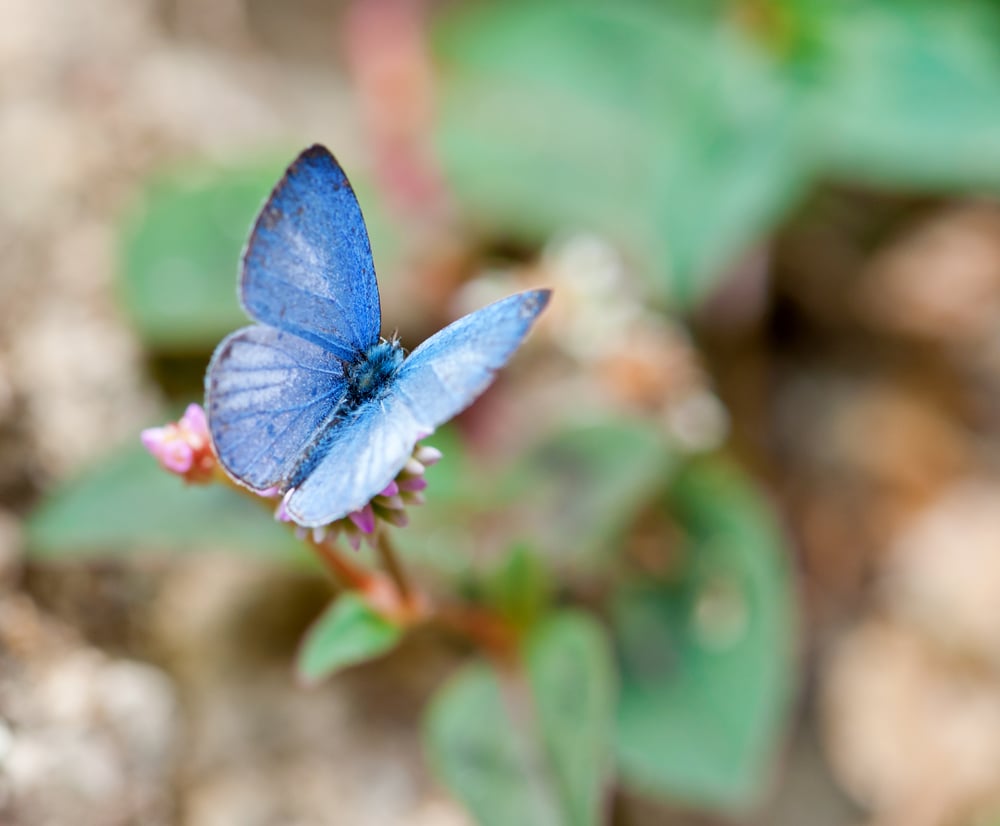
Identifying Characteristics and Facts
- Males have blue wings that are spotted gently.
- Females have blue wings but with some black margins on the edges.
- The wings are medium-gray when closed.
- A bit smaller, just about 2.2 – 3.5 cm.
- Caterpillars vary in color.
- Mostly feed on nectar.
- Caterpillars feed on the fruits and flowers of the host plant.
#5. American Lady (Venessa Virginiensis)
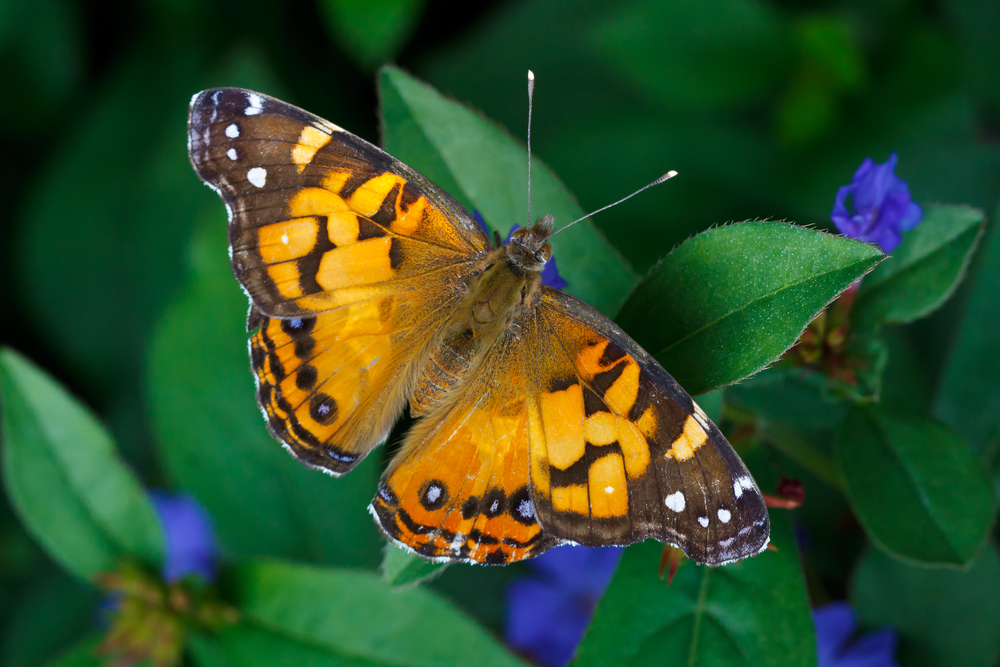
If you want to see American Lady butterflies then look no further than your garden, meadows, fields, and forests. Of course, you’ll see quite a few of these butterflies in Oregon from early spring. You are even likely to notice them during the winter before it gets too cold too.
One thing about American lady butterflies is that they can migrate long distances. This happens when they are searching for breeding sites or food, which become rare in Oregon during the winter.
There is also a striking resemblance that exists between them and the Painted lady butterflies. The difference between them is that the American lady has two eye spots that are large compared to the four small eye spots of the Painted lady.
Sadly, these butterflies have a good number of predators that include birds, wasps, and spiders.
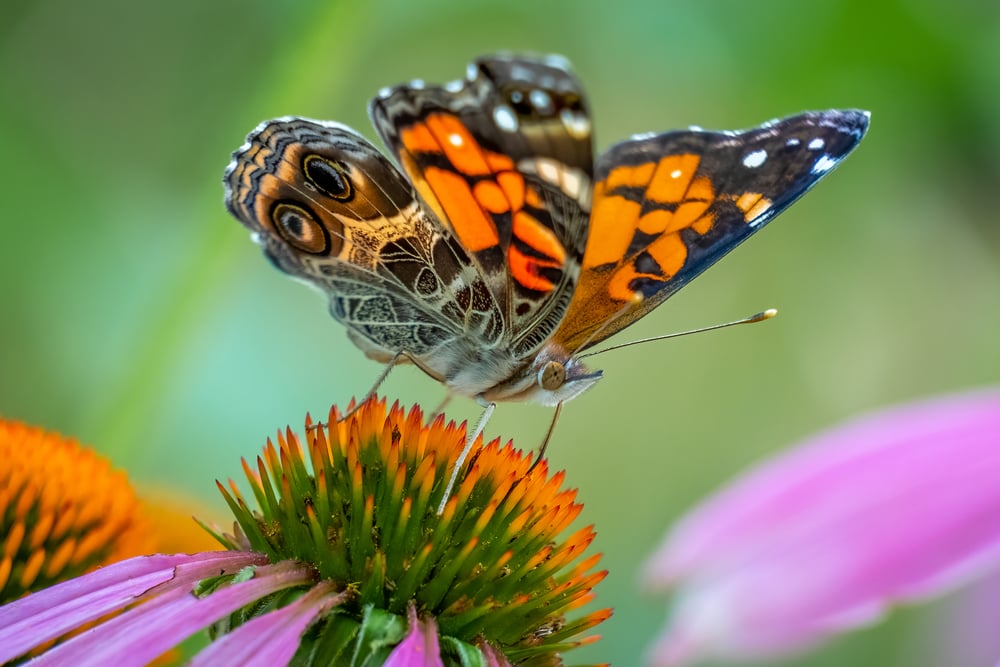
Identifying Characteristics and Facts
- Has got a wingspan of 1.75 to 2.40 inches.
- Orange to brown upper wings with some white markings and black spots.
- They mostly feed on nectar while caterpillars can feed on the leaves of some flowers like asters.
- Has four small eyespots that you can see on their underside hindwings.
#6. Buckeye Butterfly (Junonia Coenia)
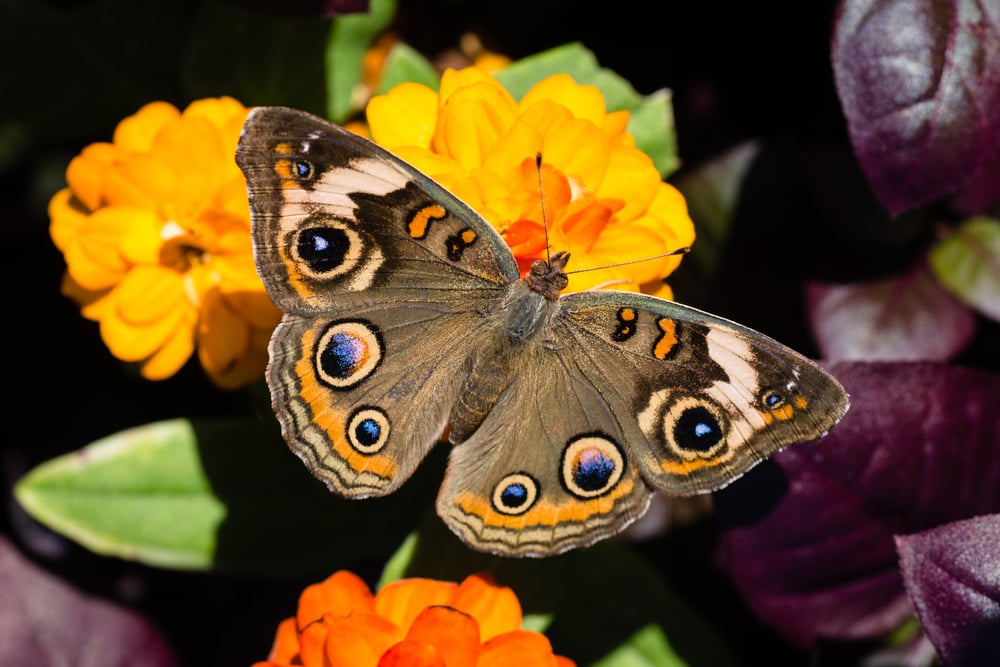
It is easy to identify these Buckeye butterflies that are common in Oregon. You will see them with six eye-like spots with two large ones on each wing. You will also easily pinpoint them due to their erratic flight pattern.
An interesting fact about these butterflies are that they are named after their appearance – the eye spots on its wings.
The main habitats of this butterfly includes gardens, woodlands, and open landscapes. They are medium-sized and are also migratory while searching for breeding places and food.
Like most butterflies, the Buckeye Butterfly also undergoes complete metamorphosis. The larvae feed on the host leaves while adults feed on nectar from different types of plants. It is considered one of the most spectacular sights in mother nature.
Apart from their presence in Oregon, you will also find spread a fair amount across other states. These butterflies are popular from late summer through fall.
One other fact about Buckeye butterflies in Oregon is that they are immigratory, which means they come far from the south and inhabit Oregon’s natural habitats in big numbers.
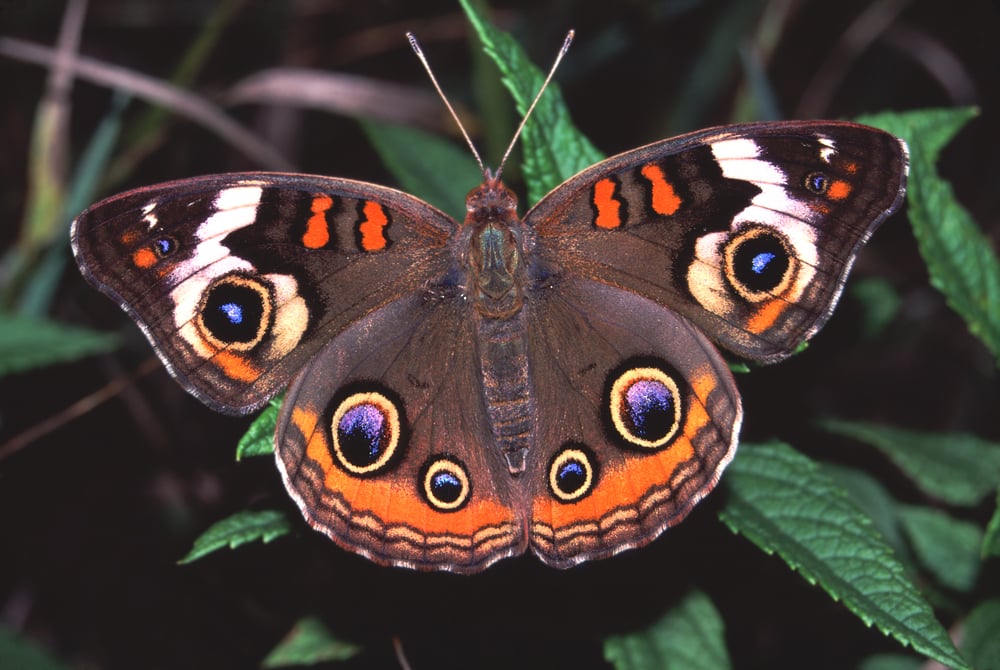
Identifying Characteristics and Facts
- Have a wingspan of 45 – 70mm.
- Females have rounded forewings and are larger than the male ones.
- Found in different habitats including gardens, forests, etc.
- They generally like flying at lower altitudes – almost to the ground.
- Their wings are dominantly brown with eye spots.
#7. Spicebush Swallowtail (Papilio Troilus)
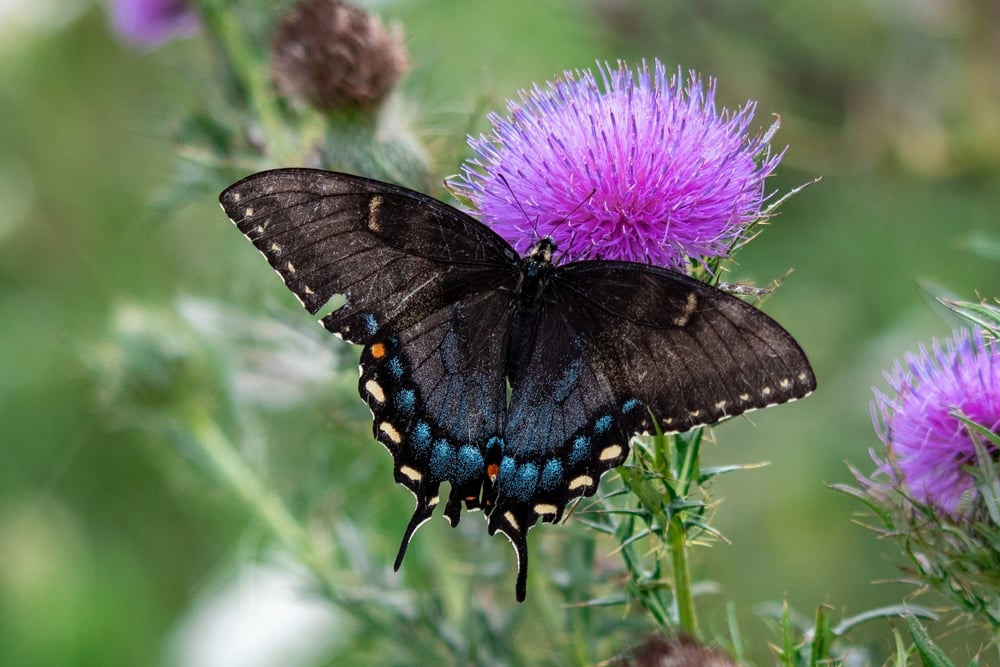
This butterfly likes to stay in swampy areas and woodlands. They are one of the common butterflies in Oregon (this butterfly is being including in the southwest and west zones just from an education standpoint) that you can spot between April to October.
One interesting fact about these butterflies is that they migrate in patterns that are similar to that of the birds. This is unique because they do that with the help of environmental cues and for food and breeding places.
When it comes to feeding, Spicebush Swallowtail eats nectar from different flowers including that of thistles and milkweed.
The caterpillar on the other hand eats white sassafras and spicebush leaves. Of course, they also complete the metamorphosis cycle before they turn into adults.
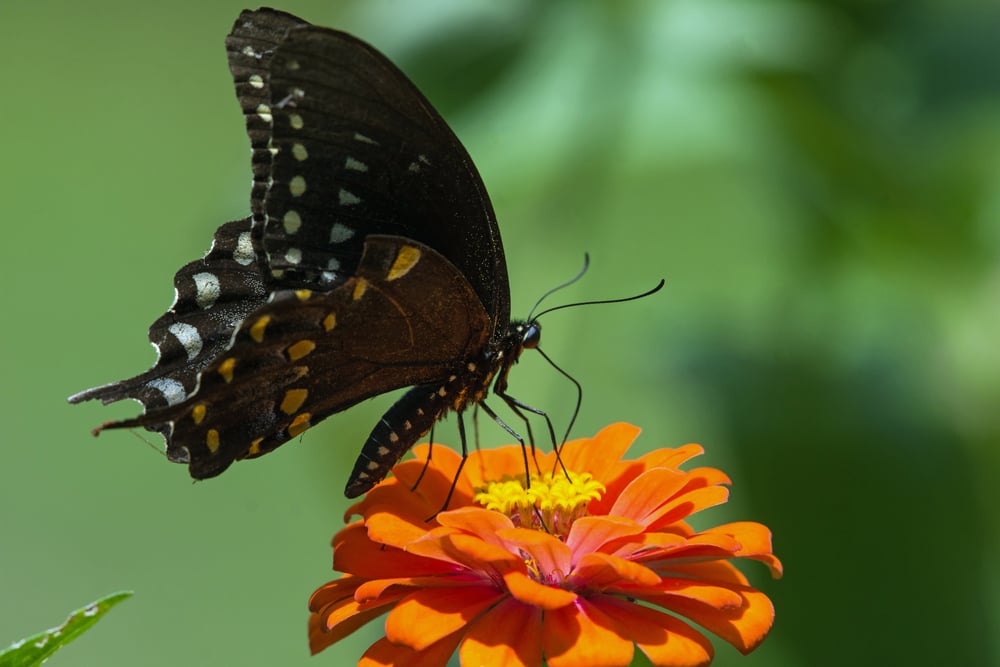
Identifying Characteristics and Facts
- They have about 2-3 broods in a year.
- They like to live in swamps, residential gardens, and woodlands.
- They have a wingspan of 3.5 to 4.5 inches.
- They are black with two rows of brown ivory spots on each of the wings.
- Slight white marks almost to the edges of the wings.
- The males have bluish-green scales while females have almost blue sheen.
#8. Common Wood Nymph (Cercyonis Pegala)
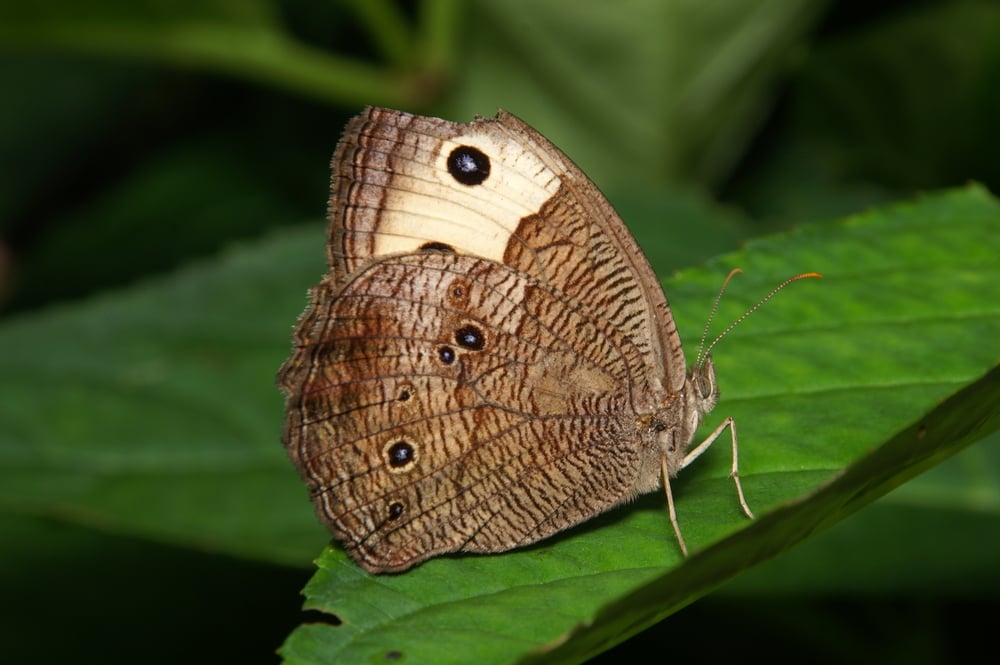
Did you know that there are up to 50 species of common wood nymphs making this an incredibly popular buttefly across the United States. In Oregon you can find the Common Wood Nymph from May to October in large numbers across meadows, field, and woodlands.
Not only that, but you can also find them in salt marshes, fields, and pastures among other habitats.
These butterflies normally brood from June all the way to early September and hence likely to give birth to more than one generation in a season.
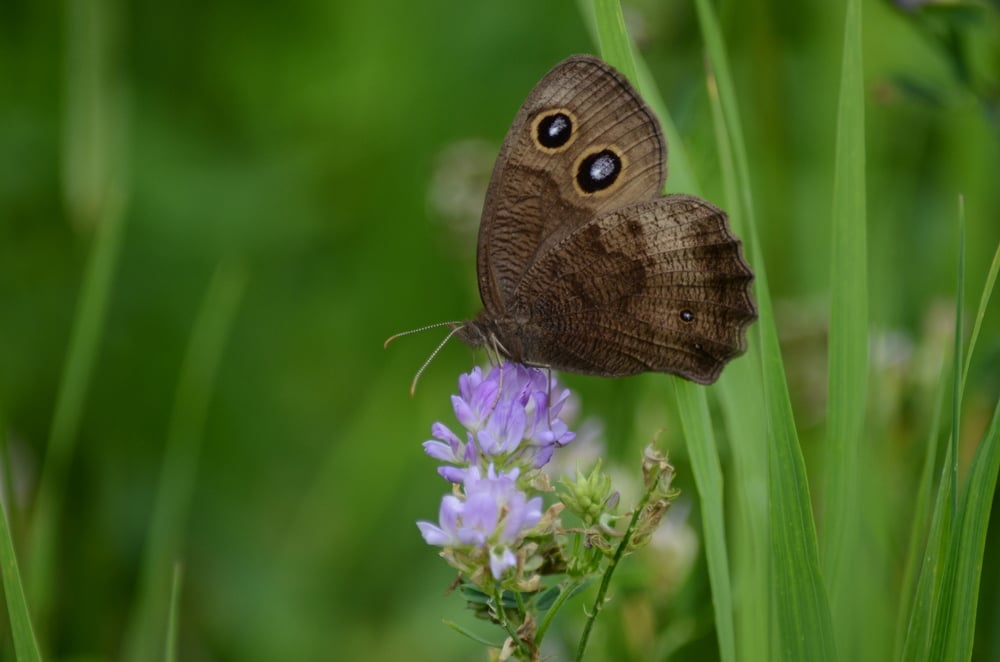
Identifying Characteristics and Facts
- Have a wingspan of 1.75 – 2.75 inches.
- Cocoa brown in color with eye spots.
- Caterpillars have green and rounded heads.
- They generally live in open woodlands.
- They feed on nectar, decaying matter, and tree saps.
- Common from May to October.
#9. White Admiral (Limenitis Arthemis)
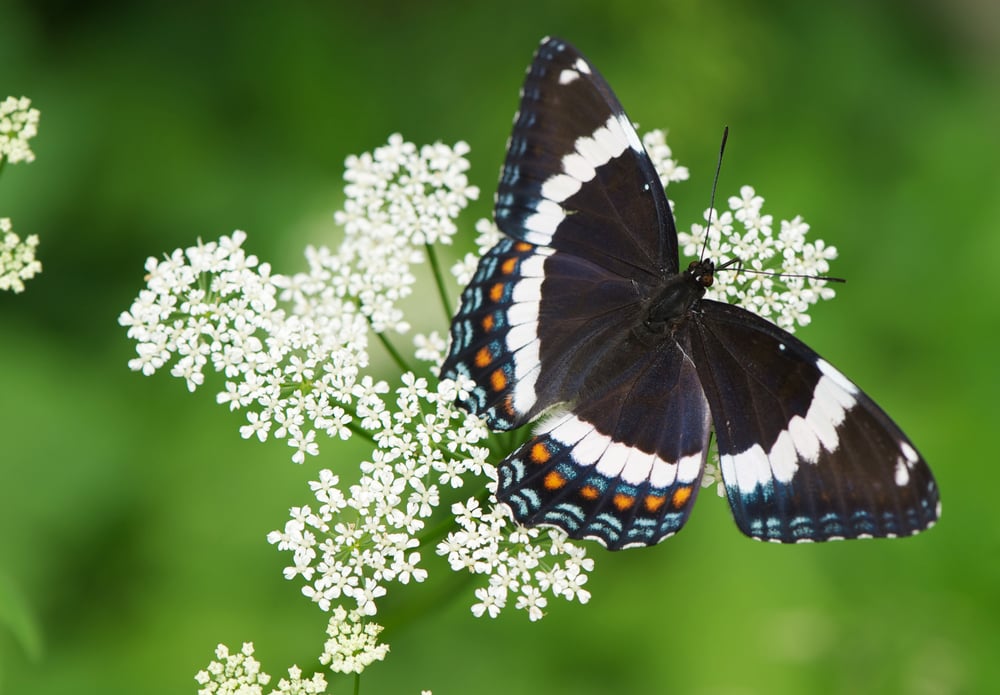
he White Admiral butterfly is a fascinating flying insect. The White Admiral butterfly can live for about 6 – 14 days as an adult. Not only this, but but the adults are diurnal – meaning they are active even during the night.
You can easily spot them in Oregon (this butterfly is being including in the southwest and west zones just from an education standpoint), especially in the coniferous and shady woodlands from early morning until late dusk.
These butterflies normally brood from June all the way to early September and hence likely to give birth to more than one generation in a season.
If you want to see the white admirals in Oregon, then you should check mostly around April to October when they are active. That is the season they are mating and are also migratory when in search of food and brooding places.
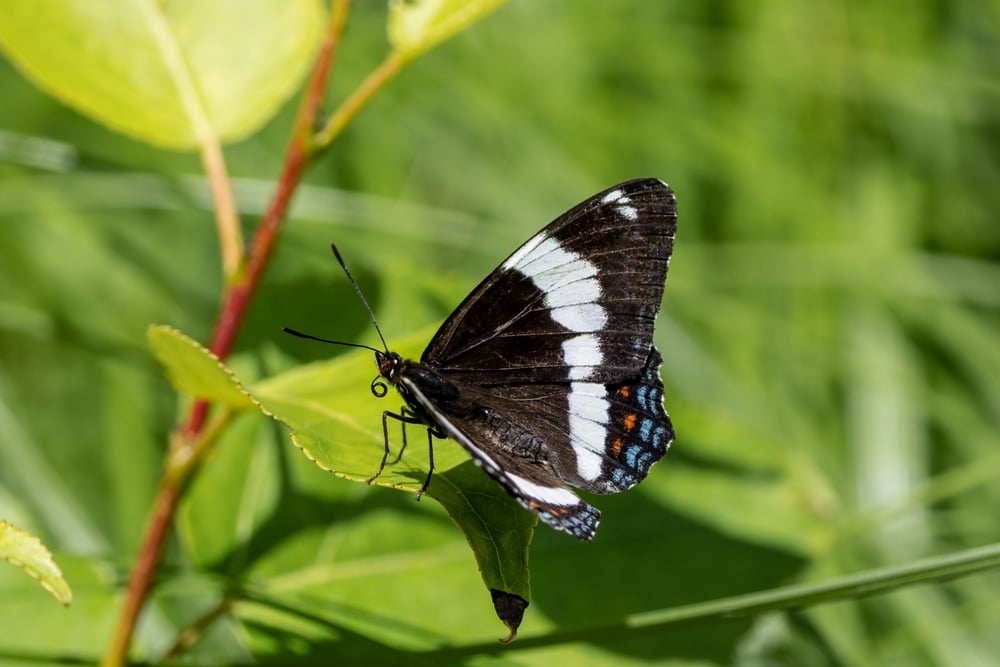
Identifying Characteristics and Facts
- Have broad bands in white that cuts across both wings.
- Have a row of red and blue spots on their hind wings.
- Have a wingspan of 6.5 – 7.5 cm.
- Feed on honeysuckle plant and nectar.
- They also eat decaying matter and moisture from damp sand.
#10. Monarch (Danaus Plexippus)
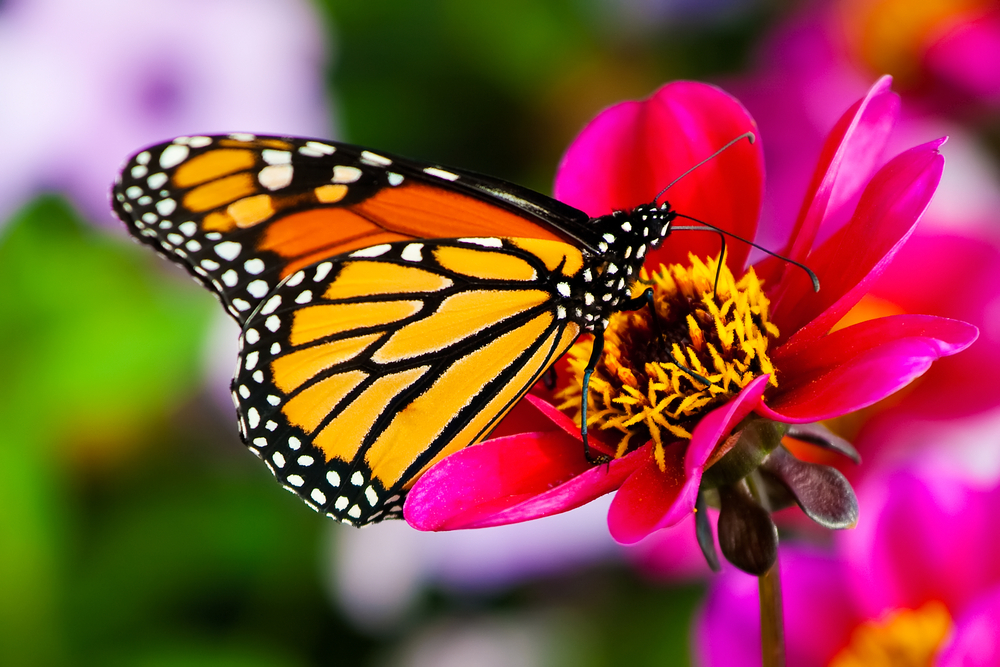
The Monarch Butterfly is considered the most popular and majestic butterfly in the entire world. It is easily identified by its flying patterns and its orange and black coloring patterns.
If you live in Oregon or have ever been have been to Oregon then you have spotted the Monarch Butterfly in summer and falls. You can easily find these butterflies in gardens, fields, and meadows.
It should be noted the monarch butterfly is endangered of becoming extinct due predators and humans. More specifically this type of butterfly is dying due to pesticides and herbicides in yards and gardens.
Not only that, but the Monarch Butterfly is considered one of the best pollinators in the United States. They are attracted to butterfly bushes, bee balm, and almost any summer and fall perennial flowers.
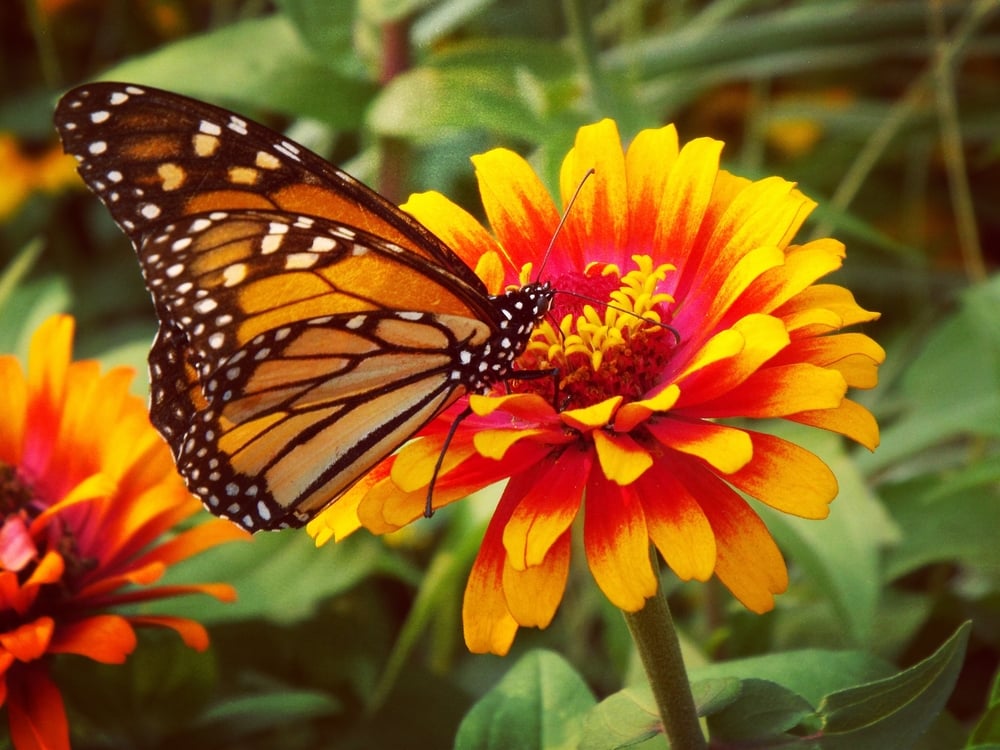
Identifying Characteristics and Facts
- Have a wingspan of 4 – 4.5 inches.
- Orange Black wings.
- They are found in almost all habitats.
- Quickly becoming an endangered species.
Common Factors of the Most Common Frogs in Oregon
As a reminder, the below factors are common for the most common frogs:
- Beneficial to the environment. These are some of the best pollinators for flowers, plants, gardens, and so much more.
- Have similiar characteristics to each other
- One of the easiest ways to identify them is based on the wing colors and spots
- Most butterflies will migrate and some butterflies will have more than one brooding in a season.


